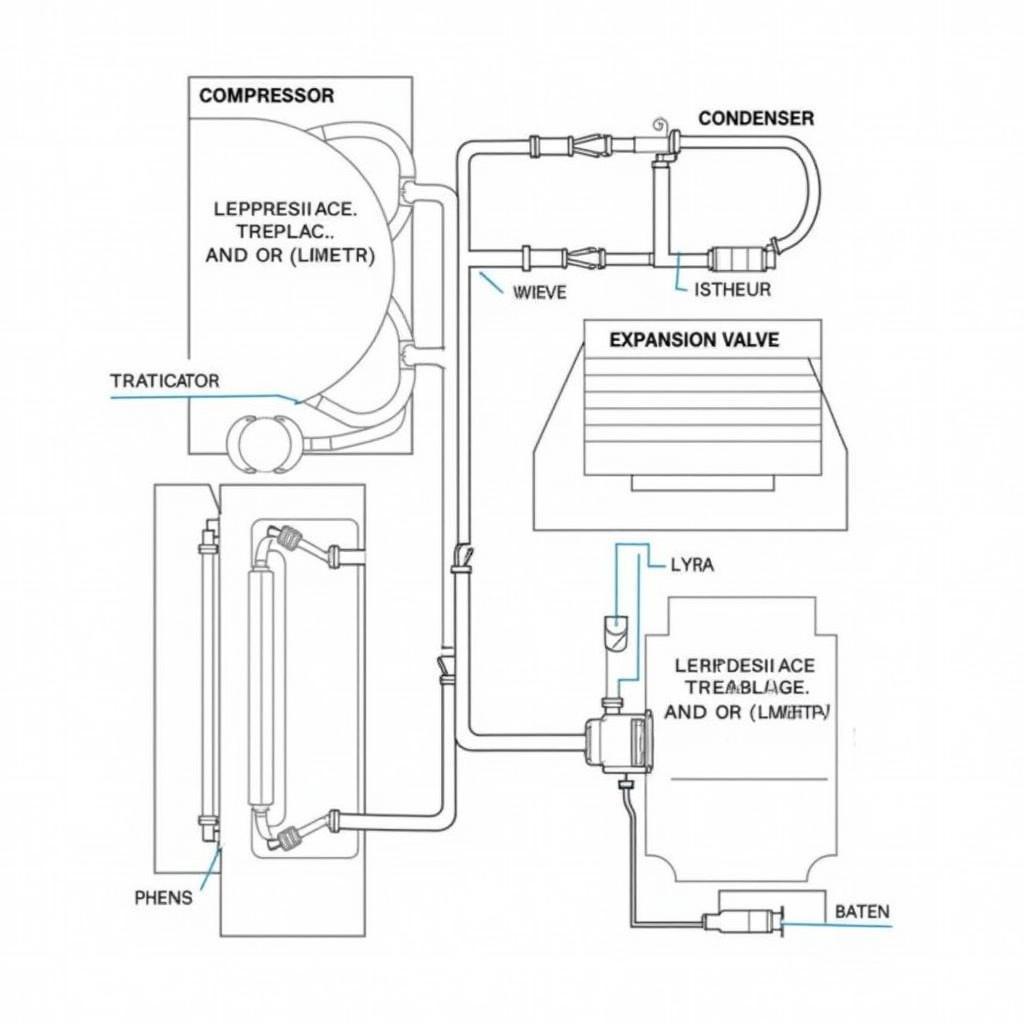Dealing with a broken car AC, especially during the scorching summer months, is a nightmare. Knowing how to fix an AC leak in your car can save you money and discomfort. This guide will equip you with the knowledge and steps to diagnose and potentially fix that pesky AC leak yourself.
Finding a reliable car AC fix can be a challenge. Check out reputable services for car air conditioning fix in Modesto for quality repairs if you’re in the area.
Understanding Your Car’s AC System
Before diving into fixing the leak, it’s essential to understand the basic components of your car’s AC system. The system operates on a closed loop, circulating refrigerant to cool the air. Key components include the compressor, condenser, evaporator, and expansion valve. These parts are connected by hoses and seals, which are common leak points.
Identifying the Leak
Pinpointing the exact location of the leak is the first crucial step. While some leaks are visually apparent, others require specialized tools.
Visual Inspection
Start by visually inspecting the AC components and hoses for signs of oil residue, discoloration, or damage. Look for greasy spots around connections and components. Sometimes, a simple visual inspection can reveal the culprit.
 Visual Inspection of Car AC System for Leaks
Visual Inspection of Car AC System for Leaks
Using a UV Dye
For harder-to-find leaks, a UV dye is incredibly useful. This dye is added to the AC system, and a UV light is used to locate the leak. The dye will fluoresce under the UV light, highlighting even the smallest leaks.
Electronic Leak Detectors
Electronic leak detectors are another helpful tool. These devices are sensitive to refrigerant and can detect even minute leaks that might be missed by other methods. They are especially useful for leaks in concealed areas.
 Using an Electronic AC Leak Detector
Using an Electronic AC Leak Detector
If you are unsure about the repair process, it’s always best to consult a professional. Knowing who do i go to to fix ac in car can be helpful in choosing a reputable repair shop.
Common AC Leak Locations
Several areas are prone to AC leaks. Knowing these common trouble spots can narrow down your search.
- Hoses and Connections: The flexible hoses connecting the AC components can crack or deteriorate over time, leading to leaks. Check the connections for loose fittings or damaged seals.
- Compressor: The compressor is the heart of the AC system, and its seals can wear out, causing leaks.
- Condenser: Located at the front of the car, the condenser is susceptible to damage from road debris, which can cause leaks.
- Evaporator: The evaporator is often located inside the dashboard and can be a tricky spot to access. Leaks here can often result in a sweet smell inside the car.
Knowing how much does getting ac in car fixed cost can help you budget for repairs and compare prices from different providers.
Fixing the Leak
Depending on the location and severity of the leak, you may be able to fix it yourself.
DIY Fixes
For minor leaks in hoses or connections, you might be able to use a sealant or replace the damaged part yourself. However, working with refrigerant requires caution and proper safety procedures.
Professional Repair
For more complex leaks or if you are uncomfortable working with the AC system, it’s best to seek professional help. A qualified technician has the necessary tools and expertise to diagnose and repair the leak effectively.
 Mechanic Repairing a Car AC Leak
Mechanic Repairing a Car AC Leak
Preventing Future Leaks
Regular maintenance is key to preventing future AC leaks.
- Regular Inspections: Have your AC system inspected annually by a qualified technician.
- Keep it Clean: Keeping the condenser clean from debris can prevent damage and leaks.
Consider a temporary ac fix for car while waiting for professional repair if you need a quick solution. You can also learn more about how long to fix air conditioner in car to manage your expectations during the repair process.
Conclusion
Fixing an AC leak in your car can seem daunting, but with the right knowledge and approach, it can be manageable. By understanding the system, identifying the leak, and taking appropriate action, you can get your car’s AC back in working order and enjoy a comfortable ride. Remember, if you’re unsure about any step, don’t hesitate to contact a professional. For expert assistance and reliable service, reach out to AutoTipPro at +1 (641) 206-8880 or visit our office at 500 N St Mary’s St, San Antonio, TX 78205, United States.
 Diagram of a Car’s AC System
Diagram of a Car’s AC System
FAQ
-
What are the signs of an AC leak in my car? Common signs include weak airflow, warm air blowing from the vents, unusual noises from the AC system, and a sweet smell inside the car.
-
Can I drive my car with an AC leak? While you can technically drive with a leak, it’s not recommended. Continuing to run the system with low refrigerant can damage the compressor.
-
How often should I recharge my car’s AC? Typically, a properly functioning AC system should not require frequent recharging. If you need to recharge it often, it indicates a leak that needs to be addressed.
-
How much does it cost to fix an AC leak? The cost can vary depending on the location and severity of the leak. It’s best to get a quote from a reputable repair shop.
-
What is the most common cause of AC leaks? Worn-out hoses and seals are the most common culprits for AC leaks.
-
Can I fix an AC leak myself? Minor leaks in hoses or connections might be fixable with DIY methods, but more complex leaks require professional expertise.
-
How can I prevent future AC leaks? Regular inspections and keeping the condenser clean are crucial for preventing future leaks.





Leave a Reply